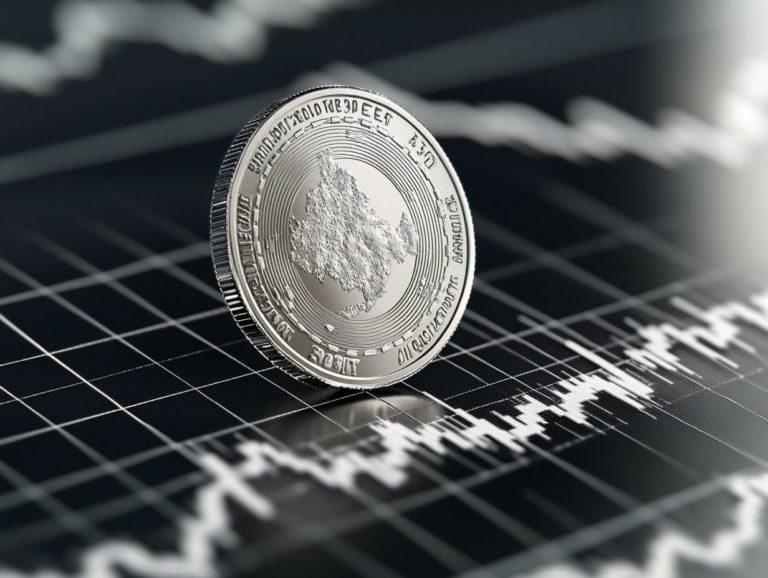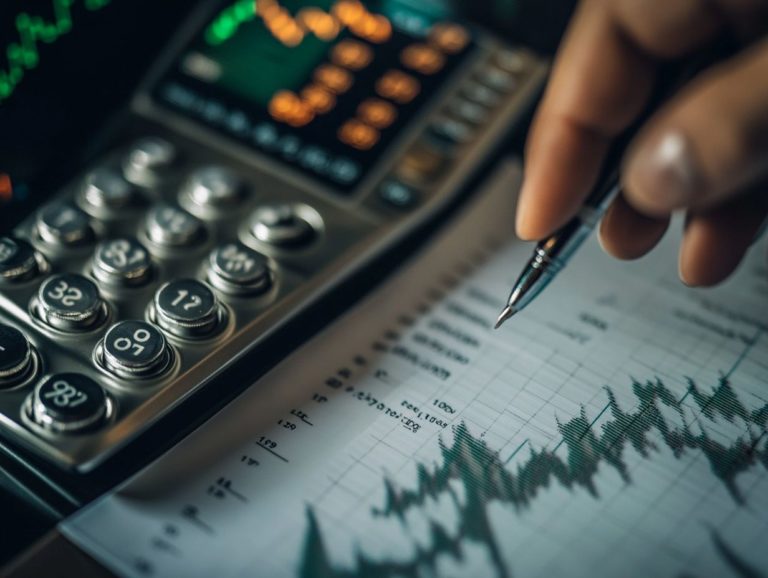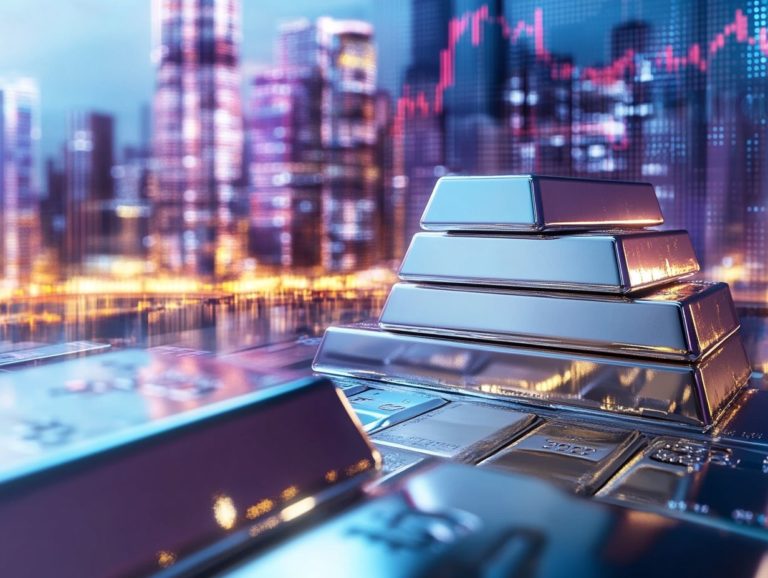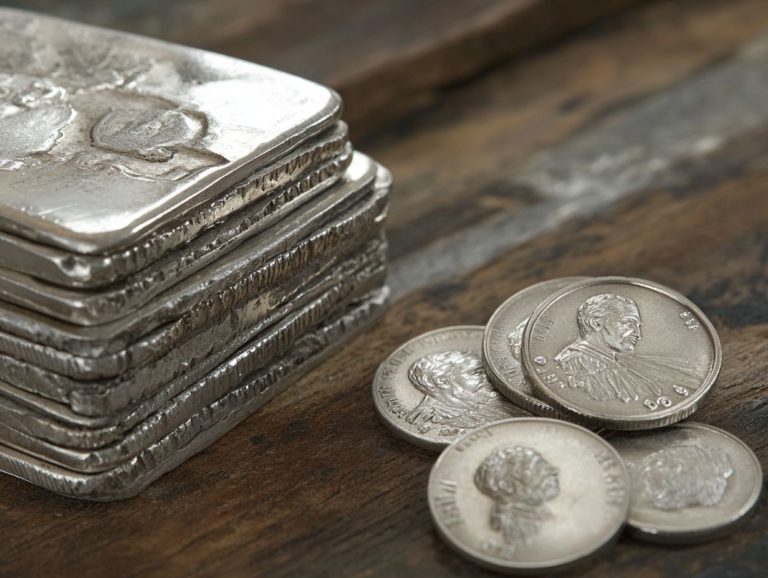5 Key Indicators for Silver Market Analysis
Silver has long been a prized commodity, playing diverse roles that range from industrial applications to a trusted investment.
In this article, you’ll discover five key indicators that drive the silver market. We will touch on aspects such as global demand, industrial usage, and investment trends. You ll also learn how market volatility and political and economic issues shape silver prices.
Whether you re an investor seeking to enhance your portfolio or simply curious about the intricacies of the silver market, understanding these elements provides invaluable insights into the dynamics of this fascinating metal!
Contents
- Key Takeaways:
- 1. Global Demand for Silver
- 2. Industrial Usage
- 3. Investment Demand
- 4. Market Volatility
- 5. Economic and Political Factors
- What Drives the Demand for Silver?
- How Does Industrial Usage Affect the Silver Market?
- Why Is Investment Demand Important for Silver Analysis?
- How Does Market Volatility Impact the Price of Silver?
- What Role Do Economic and Political Factors Play in Silver Market Analysis?
- What Are Some Other Factors to Consider in Silver Market Analysis?
- Frequently Asked Questions
- What are the 5 key indicators for silver market analysis?
- How does demand affect silver market analysis?
- What role does supply play in silver market analysis?
- How does price impact silver market analysis?
- What market trends should be considered in silver market analysis?
- How do economic conditions affect silver market analysis?
Key Takeaways:
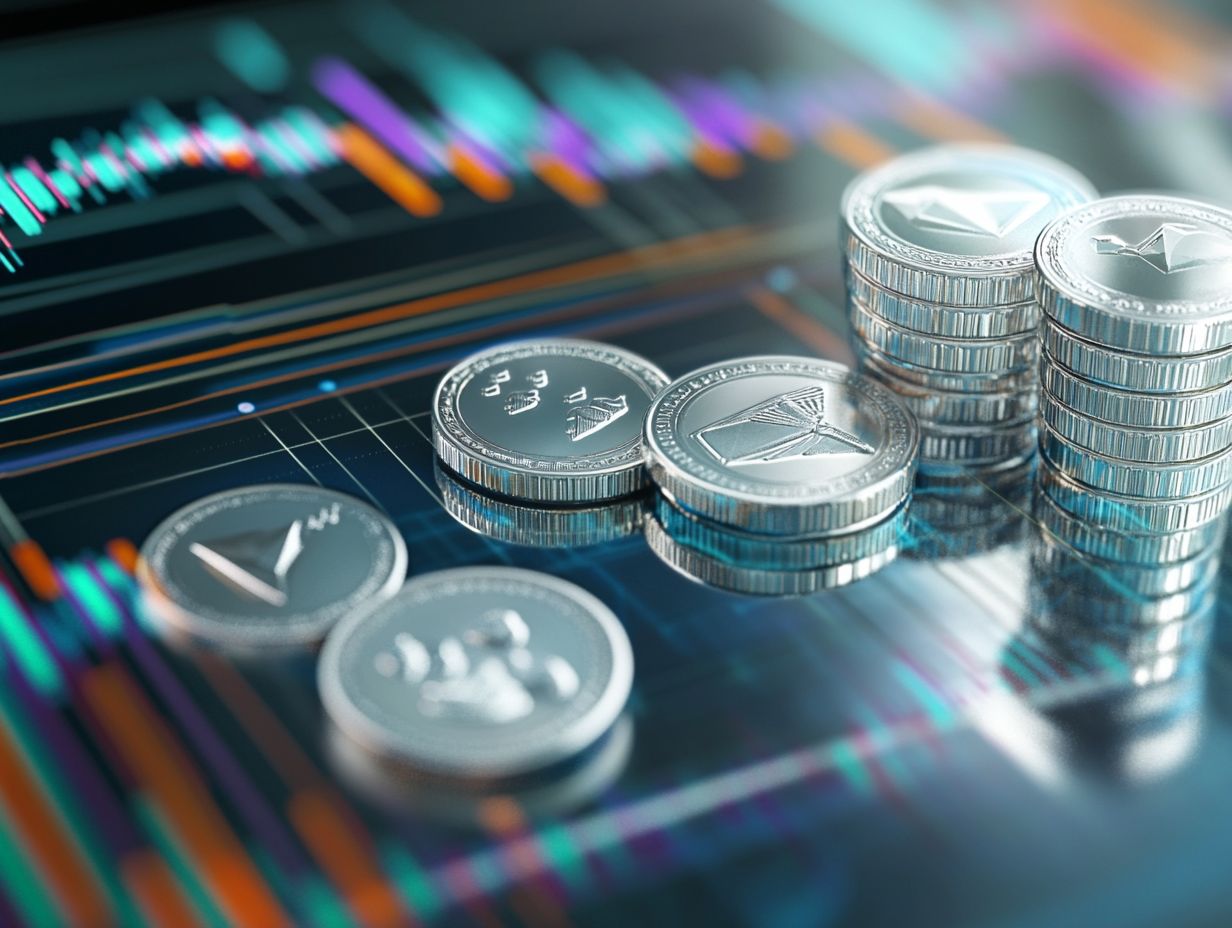
- The global demand for silver is a key indicator for market analysis.
- Industrial usage significantly impacts supply and demand dynamics.
- Investment demand greatly influences price and market trends.
1. Global Demand for Silver
The global demand for silver has skyrocketed in recent years. This surge is fueled by its remarkable properties as a precious metal and its wide-ranging applications across various industries.
This increasing demand signals a growing interest in silver as an investment. It also underscores its vital role in sectors such as electronics and solar energy, where industrial usage is rapidly expanding.
In China’s dynamic manufacturing environment, technological innovations are intensifying the appetite for silver. Such consumer behavior significantly impacts pricing dynamics.
Geopolitical factors highlight how connected global markets are. Changes in demand can lead to immediate effects on silver’s valuation, shaping strategies for you as an investor or stakeholder in this evolving landscape.
2. Industrial Usage
Silver plays a vital role in various industrial applications, from electronics to renewable energy. These sectors significantly shape market demand and influence price movements within the precious metals sector.
In addition to these industries, silver is essential in medical applications, where its antimicrobial properties make it a key ingredient in wound dressings and surgical instruments.
The electronics sector relies heavily on silver for circuit boards and connectors, thanks to its exceptional conductivity. Meanwhile, the growing photovoltaics market is increasingly embracing silver in solar panels, boosting energy conversion efficiency.
As demand escalates in these fields, the intricate dance of supply and demand highlights its profound impact on silver’s market trends. This leads to price fluctuations that capture the attention of both investors and analysts.
3. Investment Demand
Investment demand for silver has surged as you seek alternative assets to hedge against inflation and market volatility. The gold-silver ratio often becomes a crucial indicator in your analysis.
This evolving trend reflects your growing awareness of silver’s unique qualities, especially during times of economic uncertainty. Historically, when financial crises arise or interest rates fluctuate, silver draws attention as a safe haven asset, complementing gold in a well-rounded portfolio.
The gold-silver ratio offers valuable insights into market dynamics, helping you assess whether silver is undervalued compared to gold. As sentiment shifts, strategies focused on accumulating silver can lead to enhanced price appreciation, positioning you advantageously for potential gains when market conditions call for a flight to safety.
4. Market Volatility
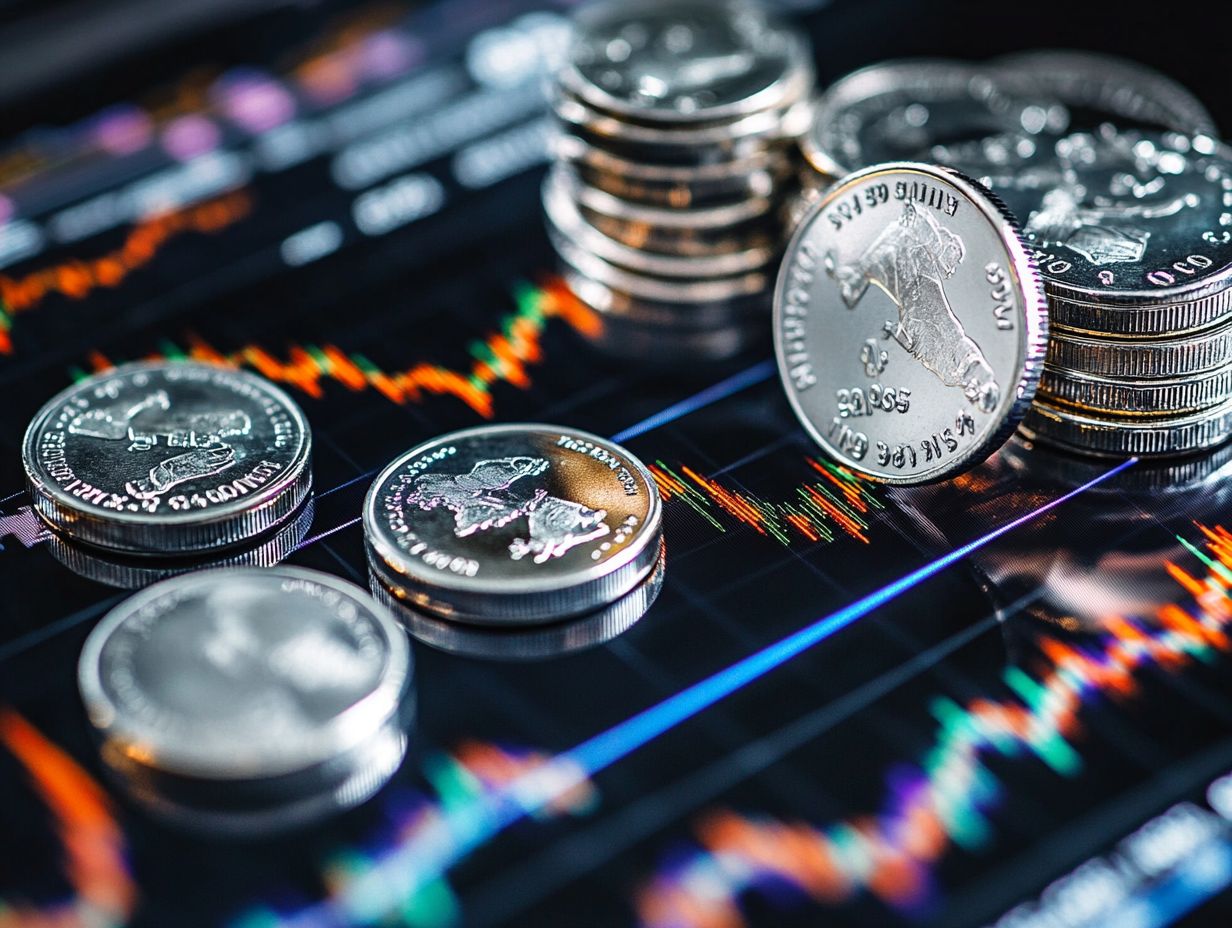
Market volatility has a profound impact on silver price movements, influenced by factors like investor sentiment and liquidity. This refers to how easily assets can be bought or sold, making silver particularly responsive in uncertain economic climates.
Fluctuations in the silver market often stem from various causes. Geopolitical tensions spark urgency among investors. Economic indicators, such as inflation rates and employment data, further shape the perception of risk. For those interested in understanding more about silver investments, the key market indicators can provide valuable insights. In times of financial uncertainty, individuals commonly reassess their investment strategies, resulting in increased buying or selling pressure.
This interaction between external events and investor psychology affects the immediate market landscape and influences long-term strategies in portfolio management. Many seek stability in silver’s tangible value, navigating market complexities with a keen eye on its underlying fundamentals.
5. Economic and Political Factors
Economic and political factors play a crucial role in shaping the silver market. These factors influence everything from central bank policies decisions made by a country’s central bank regarding money supply and interest rates to interest rates, ultimately affecting the delicate balance of supply and demand.
For instance, when inflation rates fluctuate, investors may flock to silver as a hedge against currency devaluation, which can drive up its price. Strong employment data can boost consumer confidence, impacting purchasing decisions related to silver jewelry and industrial applications.
On the political front, events like Brexit and ongoing geopolitical tensions create uncertainty, prompting traders to reassess their positions. Central banks wield significant influence over the silver market through their liquidity management strategies, adjusting interest rates and incorporating silver into their reserves. This, in turn, affects overall market sentiment and pricing strategies.
What Drives the Demand for Silver?
The demand for silver is shaped by a complex interplay of market behavior, consumer trends, and the broader global economy. Understanding these underlying factors is essential for your analysis.
Industrial usage significantly contributes to this demand, as silver’s unique properties are invaluable in sectors like electronics, solar energy, and medical technologies. Its cultural significance in jewelry and traditions consistently drives demand across various regions. Investment demand tends to surge during economic uncertainty, prompting many to view silver as a safe haven asset.
These diverse factors influence current market prices and pave the way for future trends. Understanding this multi-faceted demand landscape is crucial as you navigate the ever-evolving silver market.
How Does Industrial Usage Affect the Silver Market?
The industrial usage of silver plays a crucial role in shaping its market demand and price. This is particularly true as emerging technologies and trends in sectors like electronics and renewable energy continue to unfold.
For example, the growing demand for photovoltaic cells in solar energy has driven increased procurement of silver due to its outstanding conductivity. Advancements in electronics, especially with the advent of 5G technology, are poised to further elevate silver consumption for high-performance components.
The automotive sector also contributes to market dynamics, as silver is being integrated into electric vehicles for various applications. As these industries adopt innovative solutions, the relationship between silver’s industrial use and its market price will become increasingly significant, ultimately shaping future demand forecasts.
Why Is Investment Demand Important for Silver Analysis?
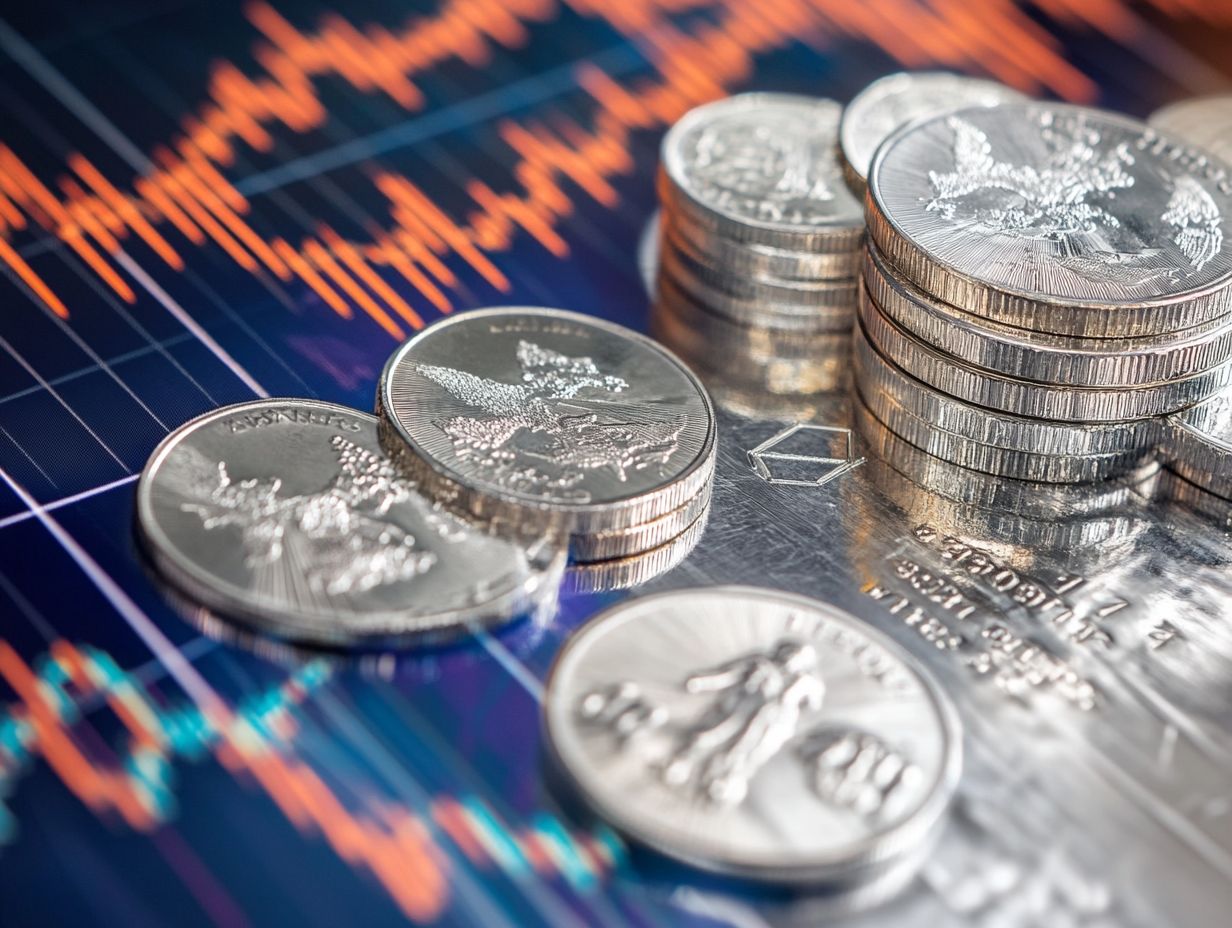
Investment demand plays a pivotal role in silver analysis. It often dictates price movements and reflects how investors respond to market conditions and economic indicators.
Understanding this demand is crucial, especially with recent trends in exchange-traded funds (ETFs) and increasing interest in physical silver purchases. These activities offer insights into current and future economic conditions.
During times of economic uncertainty or inflationary pressures, rising investment demand for silver may indicate a collective shift toward safer assets. This showcases silver’s role as a hedge in volatile markets.
How Does Market Volatility Impact the Price of Silver?
Market volatility significantly affects silver prices. Changes in investor behavior can swiftly alter demand and supply, ultimately shaping market prices.
Throughout history, economic uncertainty like the 2008 financial crisis and the COVID-19 pandemic has shown how quickly investor sentiment can change. Many individuals turn to tangible assets like silver, viewing them as safe havens amid rising fears.
This surge in demand can lead to substantial price increases. Conversely, the eventual release of pent-up demand can result in sharp declines.
Fear and greed often intensify these reactions, adding emotional weight to investor decisions and triggering unpredictable market movements.
What Role Do Economic and Political Factors Play in Silver Market Analysis?
Economic and political factors are essential for analyzing the silver market. They provide the backdrop for price movements and inform your investment strategies amid shifting market conditions.
Historical events, such as changes in monetary policy, fluctuations in inflation rates, and geopolitical tensions, greatly impact supply and demand dynamics. The silver market often sees more activity during economic uncertainty as investors look for safe-haven assets.
By closely monitoring these indicators, you can supercharge your trading strategies. Adjust your positions in response to forecasts related to interest rates or changes in government policies.
Understanding how these external factors interplay with market sentiments allows you to anticipate price movements more effectively and seize emerging opportunities.
What Are Some Other Factors to Consider in Silver Market Analysis?
In addition to economic and political factors, several other elements, such as technical indicators and investor behavior, are crucial for a thorough analysis of the silver market.
Among these indicators, moving averages serve as your compass, helping identify trends by smoothing out price fluctuations. The relative strength index (RSI) helps measure if silver is too expensive or too cheap.
This powerful combination of tools not only guides your buy and sell decisions but also offers a window into market sentiment. By carefully observing how investors react to market conditions whether in price spikes or dips you can craft more effective investment strategies.
This alignment with prevailing trends ultimately boosts your chances of achieving favorable outcomes in the ever-fluctuating silver market.
Frequently Asked Questions
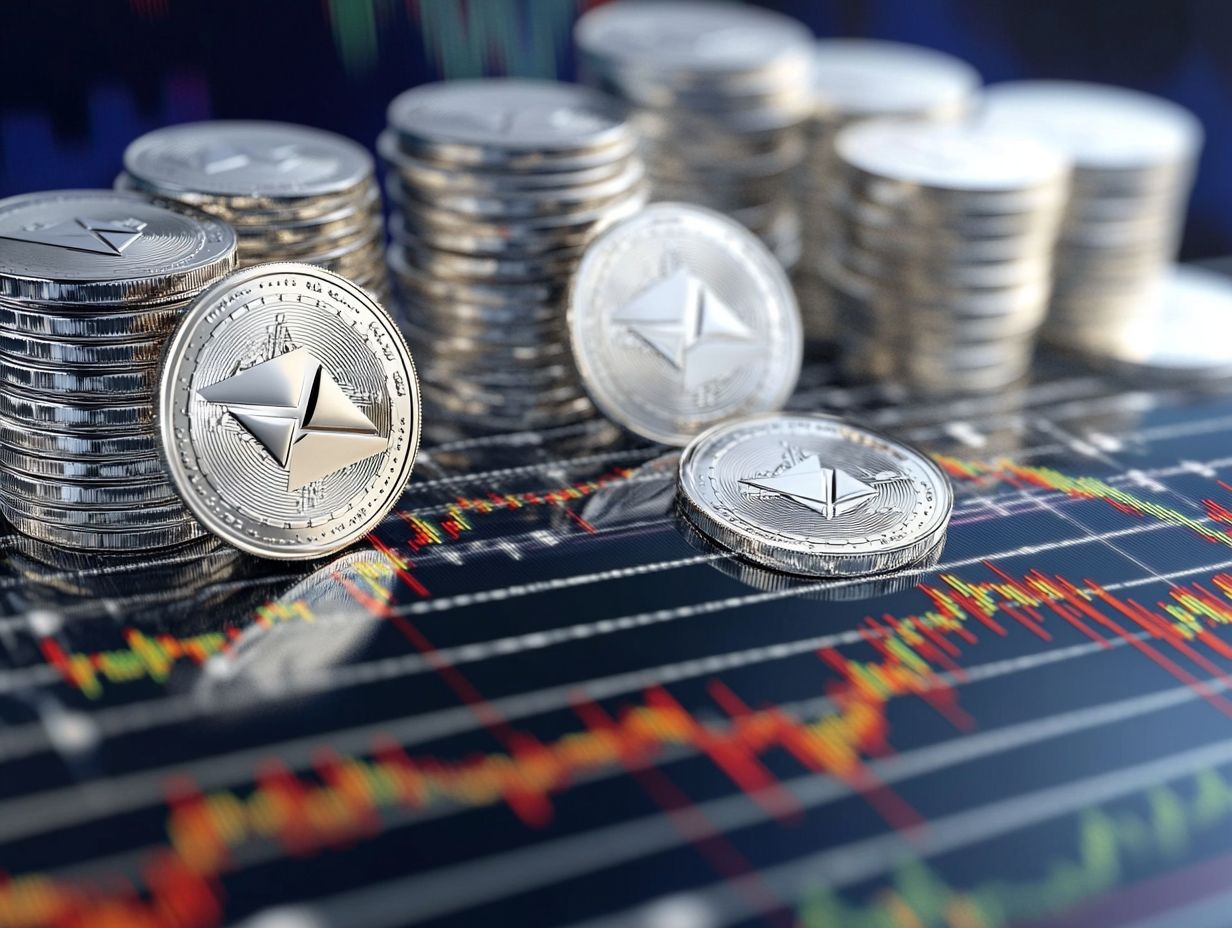
What are the 5 key indicators for silver market analysis?
The 5 key indicators for silver market analysis are demand, supply, price, market trends, and economic conditions.
How does demand affect silver market analysis?
Demand is one of the most important factors in silver market analysis. It directly influences the overall price of silver; when demand is high, the price tends to rise, and vice versa.
What role does supply play in silver market analysis?
Supply is crucial in silver market analysis. It represents how much silver is available. When supply is limited, the price often rises due to scarcity.
How does price impact silver market analysis?
Price is a key indicator in silver market analysis. It shows the current value of silver and helps predict future trends.
What market trends should be considered in silver market analysis?
Market trends provide insights into potential changes in silver demand and supply. Trends in industrial uses, investment, and jewelry can all significantly impact the market.
How do economic conditions affect silver market analysis?
Economic conditions like interest rates and inflation greatly influence the silver market. These factors affect both demand and supply, making it essential to monitor them closely.










